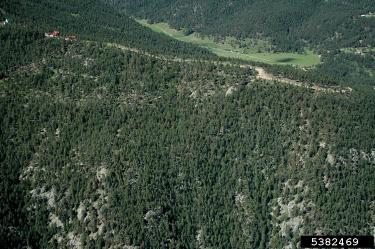Fire Regime 1
In the Southeast and parts of the West, low-severity fires were sparked regularly by lightning and burned along the forest floor without killing trees. Plants and animals adapted to the fires and many grew to depend on the regular disturbance fire brought. When Native Americans moved into these landscapes, they started fires to encourage growth of browse for the wildlife they hunted, and to prepare land for planting.
Fire Regime 1 occurred wherever temperatures were regularly warm enough and vegetation was dry enough to allow fires to spread–typically in the coniferous and deciduous forests of the Southeast, Midwest and mid-Atlantic, and the ponderosa pine and other dry-coniferous forests of the West. In some locations, fire would burn through these forests every couple of years, but in most locations Fire Regime 1 would burn at intervals of 7-25 years.
Because of the regularity of fire, forests stayed open and “park-like” with trees often attaining great age and size. In deciduous forests, mid-summer conditions were often too humid for fire, but the dry leaves of fall easily carried fires that would clear out the underbrush. Because of the open canopy, the understory of these forests was bathed in sunlight and grew rich, diverse species of flowering plants and fruiting shrubs that supported diverse animal communities.
In the absence of fire, and especially in an era of widespread fire suppression, saplings and shrubs grow into “fuel ladders” that can carry fire into the canopy. This is especially true in forests with past disturbances, like logging and livestock grazing. The build-up of vegetation that results from fire suppression has created conditions that support uncharacteristically severe fires. And in many forests, the absence of fire has degraded habitat for native wildlife adapted to open conditions, like the endangered red-cockaded woodpecker and gopher tortoise.
How can I get more tips?
It’s simple! Enter your email below.

